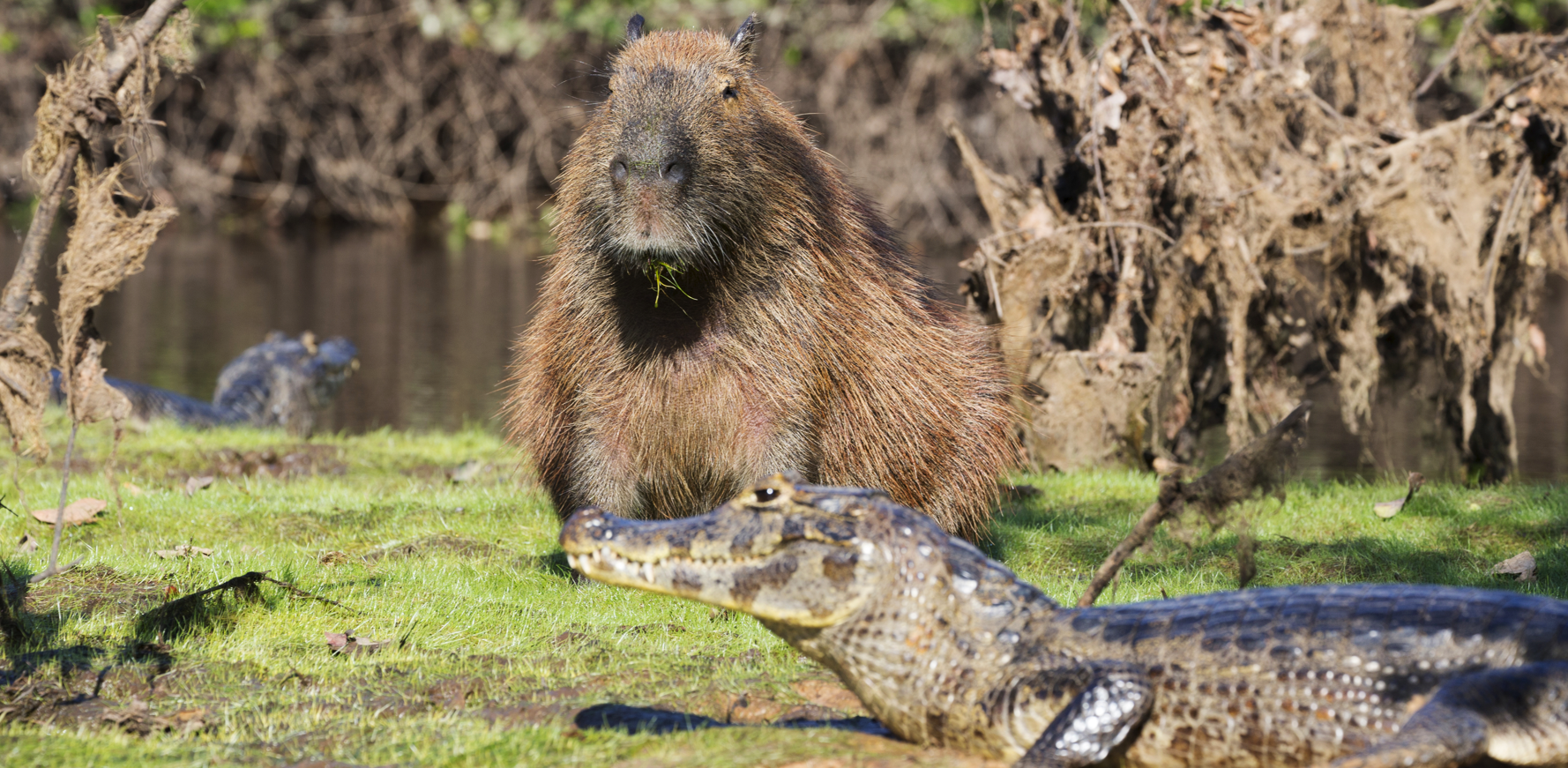The undisputed top chillers of the animal kingdom, capybaras seem to be pals with everyone and everything – even crocodilians, occasionally ferocious predators that aren’t known for their gestures of goodwill. But why is that?
Capybaras (Hydrochoerus hydrochaeris) are the largest living species of rodent (real-life Rodents of Unusual Size). Native to much of South America, they’re typically found lounging around in groups by the side of the lakes, rivers, and swamps where they spend their days munching on grass and aquatic plants.
This puts their favourite hangout spots in the prime territory of crocodilians, such as the many species of caiman that lurk in the watery jungle habitats of South America. Despite this close proximity, capybaras do not frequently become the predator’s dinner.
The exception is the babies. Babies are snacks for lots of things – even birds of prey.
Dr Elizabeth Congdon
Speaking to IFLScience, Dr Elizabeth Congdon, a certified capybara expert and assistant professor at Bethune-Cookman University in Florida, explained that it is very unusual to see crocodilians hunt and eat capybara in the wild. This isn’t to suggest that capybara are never on the menu for caimans when times are tough, she said, but it’s an uncommon occurrence.
“It is rare, especially when there are plenty of fish and easier prey to handle than a capybara. I have seen them in the wild sleeping next to each other,” Dr Congdon told IFLScience.
“The exception is the babies. Babies are snacks for lots of things – even birds of prey.”
Another capybara and caiman duo.
Image credit: Zaruba Ondrej/Shutterstock.com
Why Do Crocodiles Not Eat Capybara?
The main reason behind the unexpected truce is that capybaras are surprisingly good at defending themselves. They look harmless enough from afar, but they possess incredibly large and sharp front teeth that can inflict significant damage if need be.
“Capybaras have big, sharp teeth. Combined with their body size, I think they are just not worth the trouble and risk of injury,” explained Dr Congdon.
It isn’t just crocodilians that have an amicable relationship with capybaras. As relatively harmless herbivores, many other species are happy to share a spot by the river with them.
“I have pictures of capybaras with birds riding on their backs, turtles sunbathing on their backs while they sleep, and there are lots of examples in zoos and in captivity,” continued Dr Congdon. “If they have a patch of grass to eat or a nice pond to stay cool in, they’re good.”
Do People Eat Capybara?
Caimans, jaguars, anacondas, ocelots, harpy eagles, and other predators are known to eat capybaras in certain circumstances, but the biggest threat to the chummy rodent is humans.
Many communities hunt and eat wild capybaras in South America, despite bans in certain countries. To ease pressure on wild populations, capybara farms have popped up in recent years, and the species appears to be surprisingly well-suited to commercial agriculture.
But don’t take the relaxed attitude of a capybara for granted; mess around and you could be treated to a nasty bite. Reliable statistics of giant rodent attacks in South America are hard to come by, but media reports and viral videos suggest that capybaras have been known to attack pets and people.
Even chilled dudes have their limits.
Source Link: Why Do Crocodiles Not Eat Capybaras?
